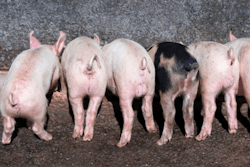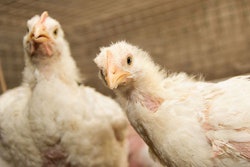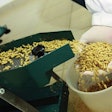
When I was in graduate school, fiber was considered, in general, as a bad thing for monogastric species like poultry and pigs. It reduced digestibility and did so many other negative things that we hardly spent much time studying it. OK, we did study fiber in depth — it was just me ignoring it, like anything else I did not find interesting, but this is another story. These days, however, fiber has become so much more interesting. What has changed? We have removed antibiotics from the equation, and all of a sudden, gut microflora stopped being the enemy and became our ally. As President Trump said recently, even old enemies can become friends (I know I read this somewhere, but it might be just fake news.) Nevertheless, fiber is definitely our friend now!
There is only one big problem, though. Summer and fiber do not mix well. Digesting fiber (or rather, fermenting it) is a process that releases heat, and the last thing a heat-stressed animal needs is more heat coming from inside. This is why we have traditionally reduced crude fiber levels during summer (hot) months. But as explained, this is no longer the best of ideas. What about those good bugs in the gut that depend on good fiber to sustain gut health, excluding bad bugs (like E.coli) that thrive on protein and not on fiber? Clearly we must maintain some level of fiber in our diets, but not all fiber is the same. There is soluble and insoluble fiber, and there is fermentable and non-fermentable fiber — and no, these terms are not interchangeable. A soluble fiber is not always fermentable, and vice versa (see now why I was ignoring fiber at graduate school?).
Anyway, the truth is that we are still guessing what fibers to use and what to exclude during summer months. Certainly we have to maintain gut motility (in older animals) and gut health (in younger animals) as priorities, but the fiber profile for each animal (species and age) is different as is the level of each specific fiber. This is a real puzzle, and I hope to have some real answers after my attendance to the 3rd Fiber Board meeting where I plan on asking all these questions to some of the world’s best fiber experts.
Stay tuned for more.


















